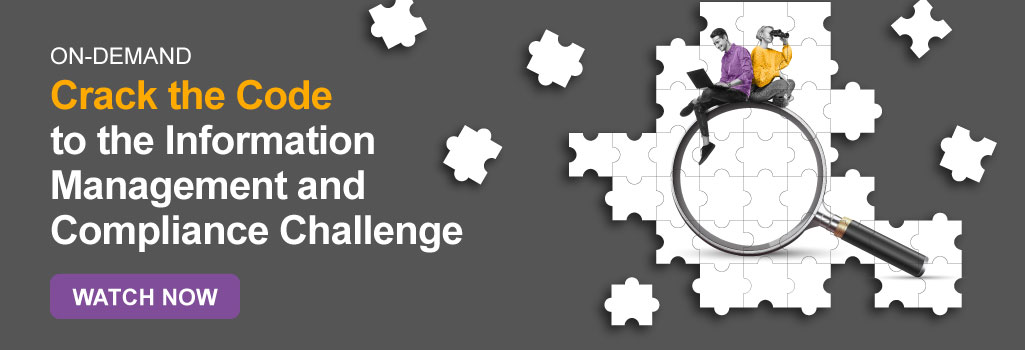From physical hard copies neatly tucked away in a filing box or cabinet to digital copies saved in online workspaces, how we manage information has indeed come a long way. Technological advancements in content digitisation and management have brought significant benefits, from allowing easy access to content to streamlining information sharing, and enabling work from anywhere to having a content repository for compliance and audit purposes. However, these technologies have also made an Information Manager’s job even harder when managing content and compliance risks.
Let’s examine why information management and compliance have become more difficult than ever.
- Multiple systems in place.
This is perhaps the most prevalent issue in organisations we have worked with. It is our experience that most businesses have adopted various solutions for managing content, from file shares to enterprise content management systems (ECM) or legacy enterprise document and records management systems (EDRMS), and of course, more modern collaborative SharePoint sites. These siloed systems make getting a comprehensive view of your organisation’s data difficult, as does tracking and managing content as it moves in and out of these platforms. The proliferation of multiple systems also creates an unpleasant user experience, with employees having to work and collaborate on documents in one platform and filing them for compliance on a separate legacy EDRMS or ECM. Because of this inconvenience, employees resist or are lax with filing the required metadata, applying the correct sensitivity labels, or even using the right systems of governance in the first place, making information management much harder. - Ungoverned or unstructured workspaces.
Ungoverned workspaces often grow haphazardly without oversight, leading to uncontrolled data and system proliferation. Confidential data stored in unstructured or ungoverned workspaces—such as cloud storage apps like Dropbox, Google Drive, or OneDrive, as well as emails and desktops—increases the risk of unauthorised access to your organisation’s sensitive information or non-compliance to data handling regulations. This impacts the ability to have proper governance of your organisation’s digital workspaces, and having a clear view of where data resides, who has access to it, and how it is used. - Data bloat.
Over time, organisations accumulate vast amounts of data, which can cause data to bloat unnecessarily without a clear retention and disposal strategy. This unnecessary storing of old, unused, or forgotten data (referred to sometimes as “dark data”) can become a target for cyber-attacks. It can also lead to non-compliance with specific data retention and disposal requirements of many regulations—such as GIPA, GDPR, HIPAA, or other—resulting in severe penalties and legal repercussions. Not only can data bloat become a security vulnerability and compliance risk, but it can also lead to escalating storage costs that can strain IT resources. - Increasingly complex compliance standards.
External factors, such as compliance standards and regulations, have also made information management and compliance more challenging in recent years. It now covers a wide range of areas, including data privacy, cybersecurity, financial reporting, environmental impact, and more. It’s likely that artificial intelligence, machine learning, and blockchain technologies will soon be part of emerging areas subject to regulation, adding new dimensions to compliance requirements as well.
Translating the broad scope of regulatory requirements into internal policies and ensuring consistent implementation across the organisation increases the complexity of compliance efforts that many information managers need to make. In addition, there is an ongoing effort to prepare for regular audits and assessments, necessitating meticulous documentation and evidence of compliance activities. - Evolving cyber threats.
The rise in sophisticated cyber threats requires organisations to constantly update their security and information management measures to comply with standards like the Australian Cyber Security Centre’s Essential Eight, NIST, and ISO 27001. Many regulations now include stringent requirements for breach notification and incident reporting, adding to the compliance burden of many Information, IT, and Compliance Managers.
Overcome your biggest hurdles with information management and compliance in our on-demand webinar.

Register now to access the on-demand webinar, "Crack the Code to the Information Management and Compliance Challenge"
Simplify information management and compliance.
At Professional Advantage, we have made it our mission for every Australian organisation to easily achieve “convenience and compliance” with information management through iWorkplace – a proven solution that lets you manage information at scale while staying compliant, all within the familiar Microsoft 365 environment.
iWorkplace makes it easy for your users to file and find content, automate the right sensitivity labels, provision SharePoint and Teams sites with built-in compliance, and more. See how it works in our resource centre and discover why hundreds of organisations across the ANZ region have already adopted iWorkplace and have been thrilled with the results.
Are you experiencing the information management and compliance challenges discussed in this blog? If so, please fill out the form to contact one of our consultants for assistance.





